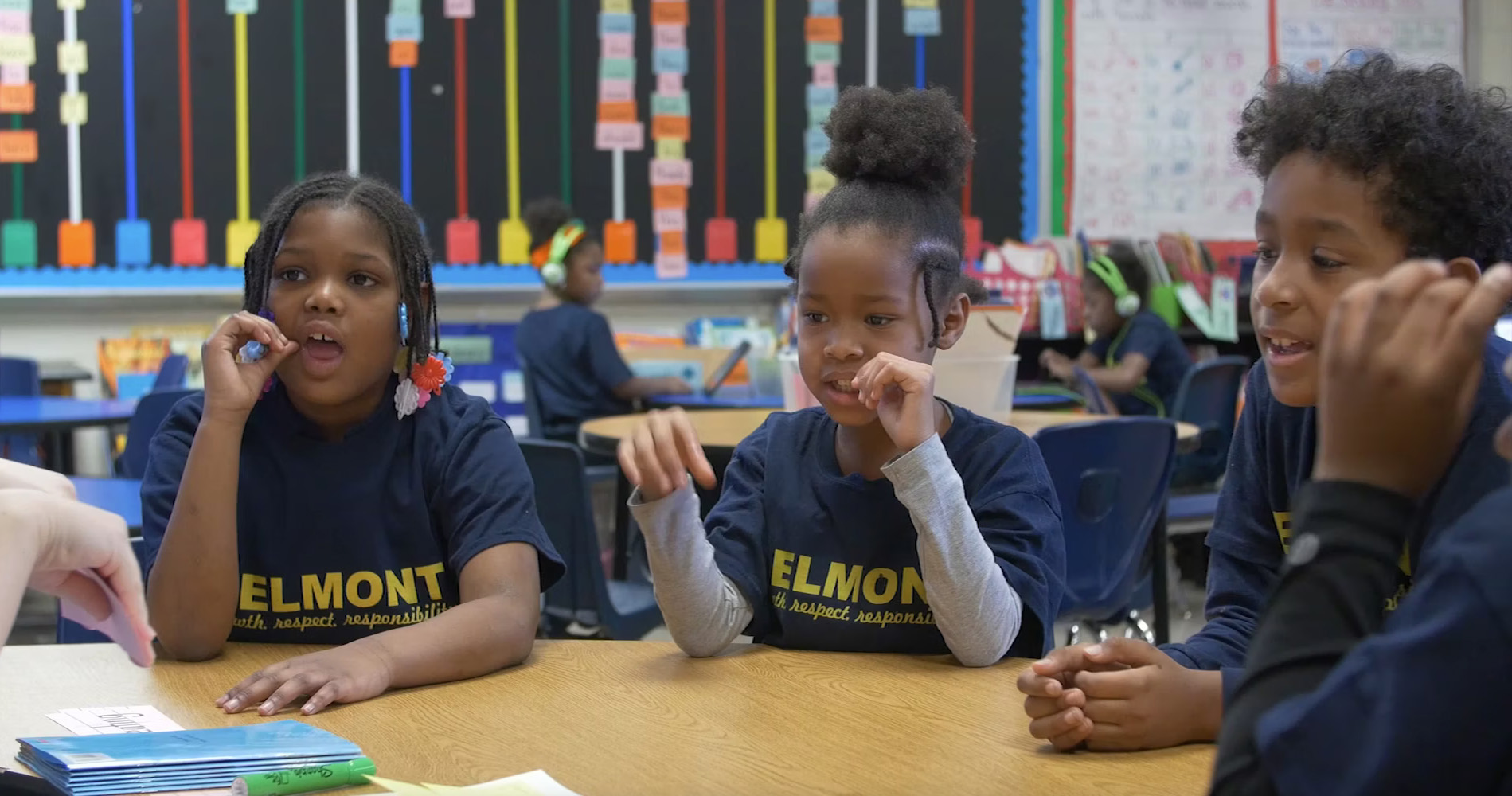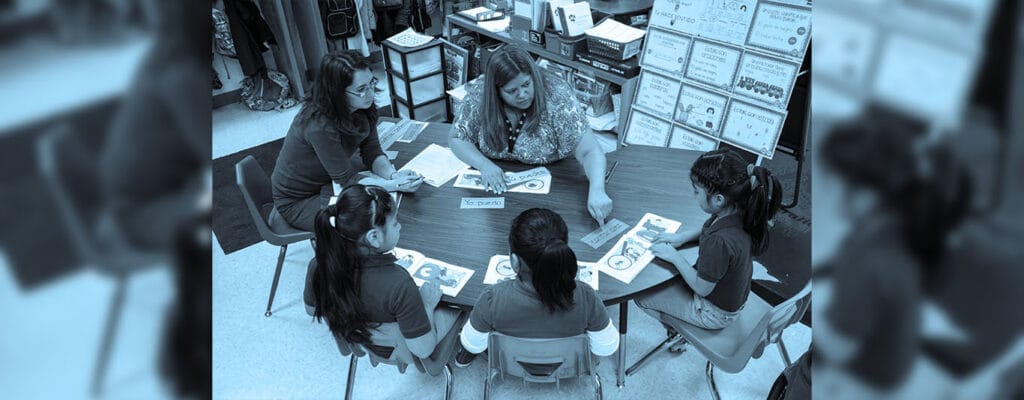


Specific warning signs – varying by age and grade – can help teachers flag a student’s learning disabilities early, says Richard Selznick, a psychologist, nationally certified school psychologist and the director of Cooper Learning Center, a child-learning program affiliated with the Children’s Regional Hospital at Cooper University Health Care with pediatric offices throughout Southern New Jersey. A majority of students will take to early reading activities – recognizing letters, learning the letters’ sounds – very easily, he said. They learn quickly from parent interaction, classroom activities and even watching educational programs like Sesame Street. But many children struggle, and it’s important to identify learning disabilities early so students get the support they need.
Selznick’s red flags for early learning disabilities include the following, listed by grade range:
Difficulty with letter recognition.
Most children start to learn their letters between the ages of four and five. Letter awareness and letter recognition at this age is a good predictor that the child will have early reading success. In contrast, a three- or four-year-old child struggling to learn the names of upper and lowercase letters is a predictor that that child might struggle with developing early reading skills.
Difficulty connecting letters with their sounds. Difficulty with rhyming, and/or playing with sounds and words.
“A majority of preschoolers can do rhyming and engage with phonemic awareness types of activities, but some children seem lack an intuitive awareness about how sounds can be manipulated,” said Selznick.
For example, ask a five-year-old child to say the word “cat” out loud, and then ask the child to say the word without the “c” sound (sound out the “c” sound for the child). The child’s ability to perform that task – and correctly say “at” — is a good predictor of early reading success, as it shows facility with phonemic awareness. “You need to watch those kids who can’t do those kinds of tasks really closely,” says Selznick.
Reading Resistance:
Sometimes a child will do everything he or she can to avoid reading or reading-related activities. “The child intuitively understands, ‘This isn’t coming easily to me’ and becomes more avoidant as a result,” said Selznick.
Parent Predisposition:
Another predictor for early reading difficulties is whether either of a student’s parents (or both) also struggled with reading when they were young.
“These predictors start to add up like they are weights on a scale,” Selznick adds. “So if you have a parent history of reading struggles, and a child who is not really rhyming, not picking up on the letter names or letter sounds, early on you have a good indication that the child is going to face difficulties with the reading development in first grade when formal reading activities are introduced.”
When reading or listening to early reading books like “The Cat in the Hat,” most first grade students begin to internalize the sound and letter system, which leads to the decoding of words. “They start to put it all together, and reading becomes a relatively smooth process,” says Selznick. But for many students, learning to read is not a smooth process, and in first grade, they face even higher learning hurdles.
Too Much Guessing:
Guessing using context – in the text, in picture book photos – is an encouraged reading strategy that is based on the reader’s sense of meaning, sense of syntax and the ability to verify guesses by decoding the letters of a word. But some children guess more than they read. When children face unfamiliar words but they do not have an internalized sense of phonics (decoding), they will often guess at the word and substitute anything — even if it’s nonsensical or disrupts the meaning. For example, a child reads the text “I remember the house by the lake” as “I remember the horse by the lake.”
“This guessing becomes particularly pronounced in second and third grades, when there are many more unfamiliar, multisyllabic words,” says Selznick.
An inability to break down words (in isolation) into component parts and sounds. Difficulty reading nonsense words.
A very strong predictor, that is a part of the reading assessment battery, is giving a child a series of nonsense words to read. For example, if a child has trouble sounding out nonsense words like ‘gat’ or ‘fep,’ this is a strong predictor that the child might experience early reading struggles.
 At this stage, for the struggling reader, reading becomes really laborious very quickly. “Words start to come fast and furious,” said Selznick. “Low frequency words – like porcupine, or other two or three syllable words – enter into second grade reading.” By now, the student faces a combined reading-spelling-writing problem. Red flags to note:
At this stage, for the struggling reader, reading becomes really laborious very quickly. “Words start to come fast and furious,” said Selznick. “Low frequency words – like porcupine, or other two or three syllable words – enter into second grade reading.” By now, the student faces a combined reading-spelling-writing problem. Red flags to note:
Writing Development Problems:
“Look to the writing,” Selznick suggests. A child’s response to open-ended writing assignments – journal writing or a prompt like “write about thanksgiving” — can be a good indicator. “How is the child writing?” queries Selznick. “Is it a laborious process? What is spelling like? How are the sentences formed?”
Significant Spelling Problems:
Watch for a student who frequently guesses at their spelling, leaving out lots of word sounds and parts.
Weakness and/or Inefficiency in Following Direction:
Ask a student to copy a short passage of text from the board. If he or she takes much longer to perform the task than the average student, the need for extra time may indicate that the student has problems processing language.
Laborious Reading Aloud:
At the beginning of a school year, teachers’ portfolio assessments using simple tools – graded word lists or story passages – can provide important information on each student. “Have each kid read out loud and listen to them,” said Selznick. “Is it being done smoothly? Is it labored? Is it there a lot of hesitancy? Does the kid make a lot of substitution errors?”
Inattention or Other Behavioral Problems:
“A lot of kids labeled ADHD have cognitive variability that could be identified, once evaluated, as active working memory problems, processing speed deficits, tracking problems or perceptual problems,” Selznick said. “A lot of those kids get off task easily when asked to perform activities they can’t do very smoothly, so they’re labeled as inattentive.”
Selznick advocates investing extra time to build a struggling reader’s foundational skills. He keeps this focus on fundamentals even if a struggling reader is in second grade, where learning objectives begin to target higher-order thinking skills and reading comprehension.
“I am unabashedly ‘bottom up’ with children who are struggling to read,” he said. “If the kid can’t do reading, spelling and writing activities, we need to teach him at the level where he is – stay very skill-based and worry about things like comprehension down the road. Everything else bottlenecks if the struggling learner can’t get over that decoding hurdle.”
Richard Selznick a psychologist, nationally certified school psychologist and the director of Cooper Learning Center, a child-learning program affiliated with the Children’s Regional Hospital at Cooper University Health Care with pediatric offices throughout South Jersey. He is the author of “The Shut-Down Learner: Helping Your Academically Discouraged Child” and “School Struggles: A Guide to Your Shut Down Learner’s Success” and blogs about school struggles and learning disabilities at www.drselz.com.
| Share this article on: | Donate |


Job-embedded coaching is the key to teacher retention and literacy success. By providing real-time support, fostering collaboration, and improving instruction, coaching helps educators thrive[..]

CLI’s 15 on Friday podcast delivers bite-sized conversations on literacy and equity in just 15 minutes. Featuring authors, educators, and advocates, each episode inspires[..]